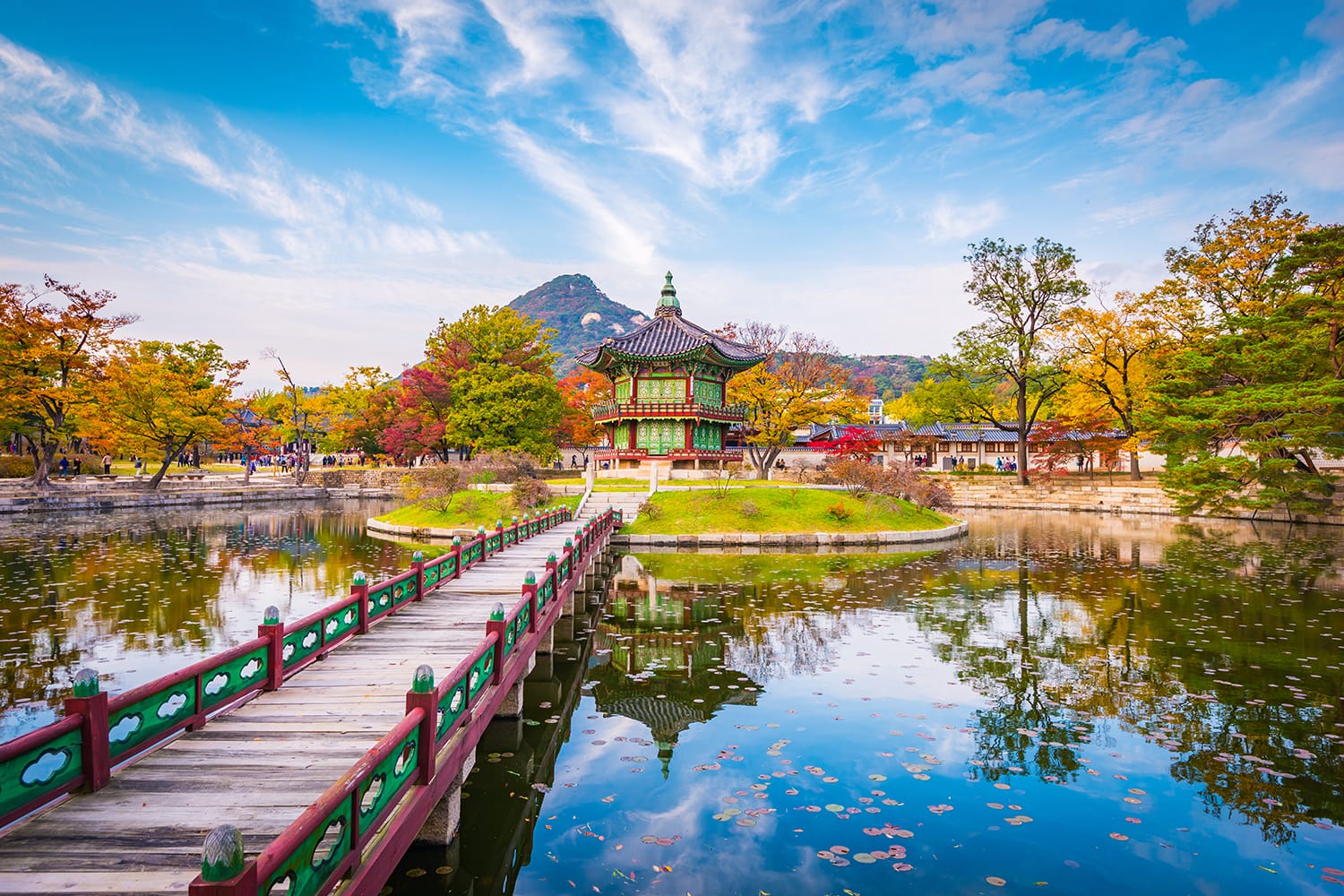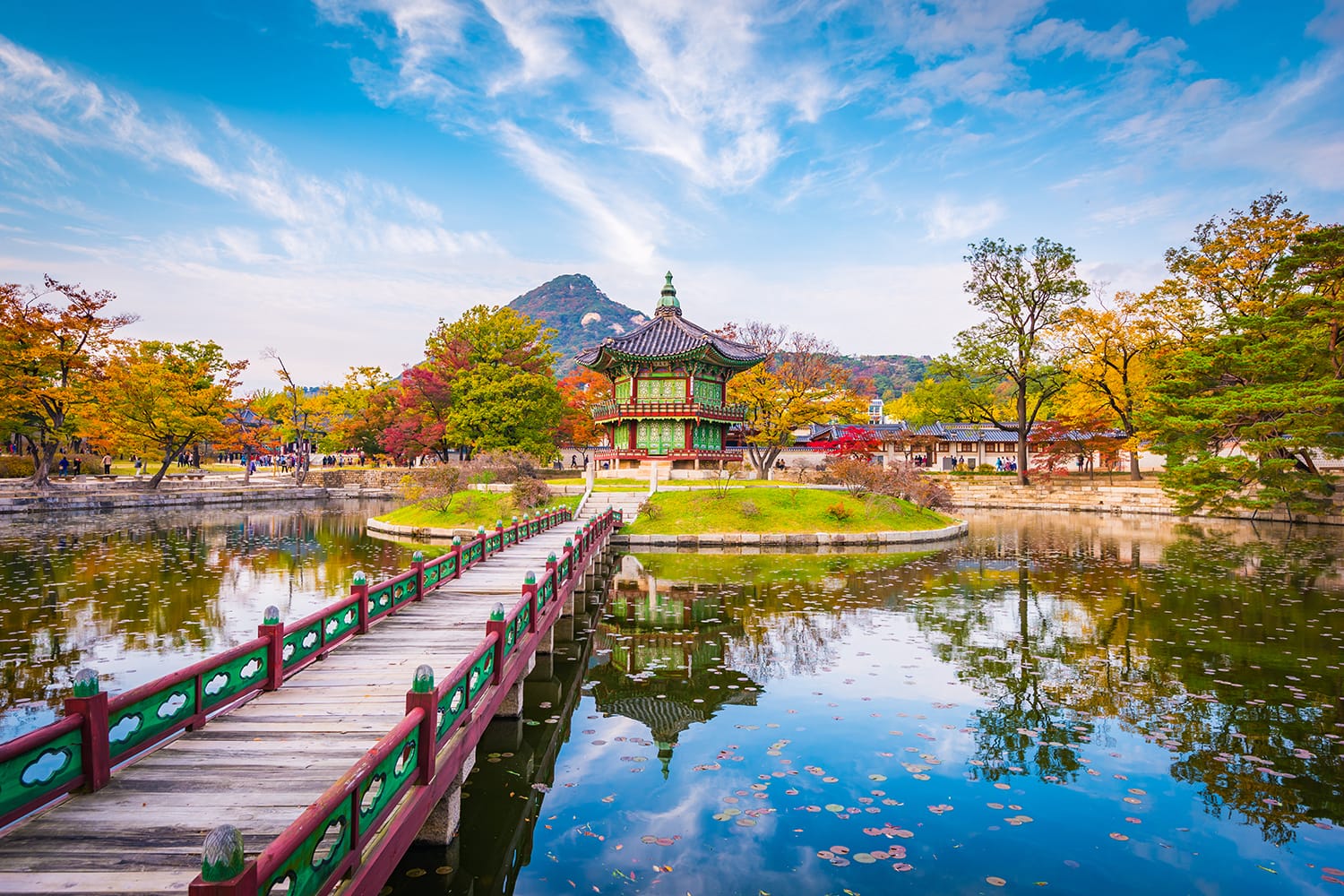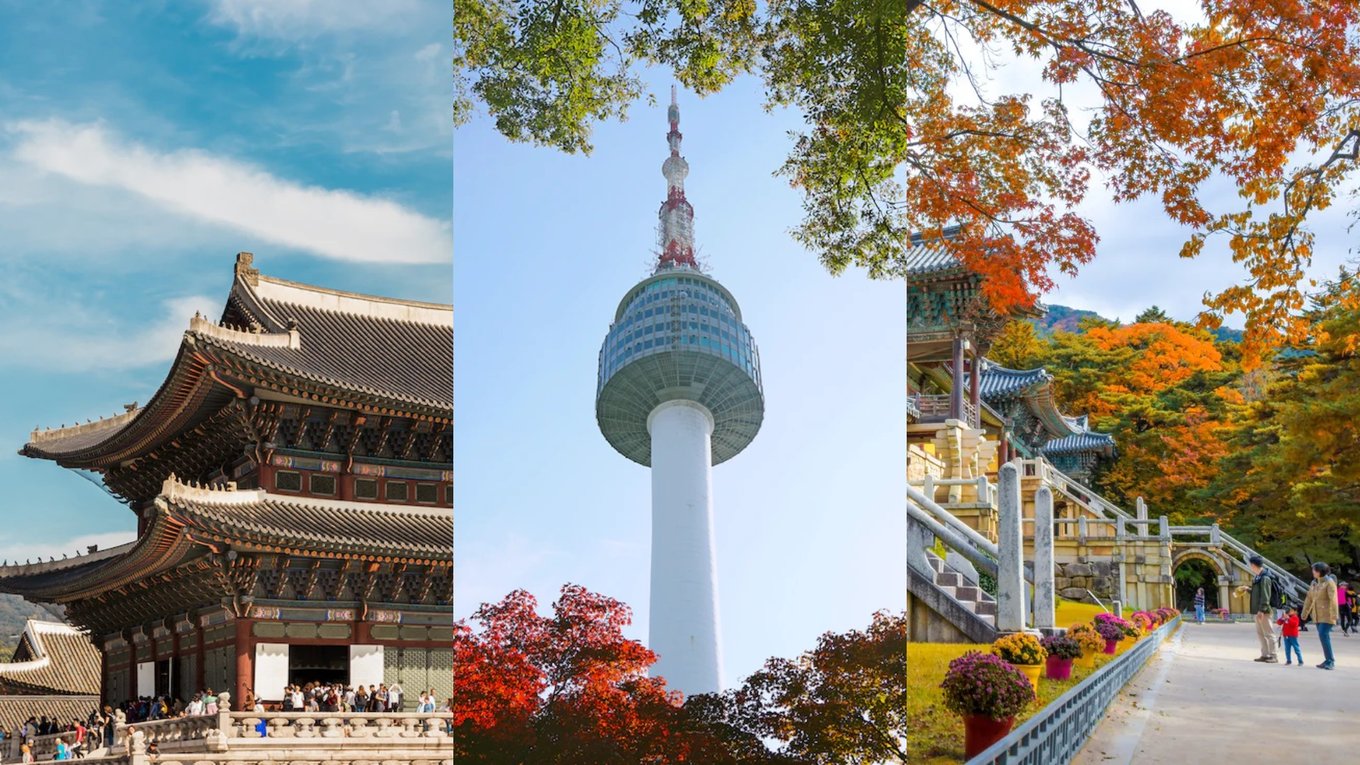
South Korea, a captivating nation often referred to as the "Land of Morning Calm," is a dynamic blend of ancient traditions and futuristic innovation. From bustling, neon-lit metropolises to serene mountain temples, from K-Pop to kimchi, it offers an immersive cultural experience that appeals to every type of traveler. This comprehensive guide will walk you through everything you need to know to plan an unforgettable journey to this extraordinary East Asian gem.
Planning Your Trip: The Essentials

Related Articles about The Land of Morning Calm: Your Comprehensive Guide to Traveling South Korea:
- Indonesia’s Enchanting Archipelago: A Guide to the Best Hotels and Unforgettable Experiences
- Beyond the K-Wave: Unveiling the Treasures of South Korea
- Unveiling the Majesty of India: A Journey Through Its Top Attractions
- Unveiling the Charms of the Netherlands: A Comprehensive Guide to Top Attractions
- Gateway to the Andes: Unveiling the Best Stays and Secrets of Machu Picchu
Before you even step foot on a plane, a little preparation goes a long way.
1. Visa & Entry Requirements:
For many nationalities, including citizens of the US, Canada, EU, UK, Australia, and New Zealand, South Korea offers visa-free entry for short tourist stays (typically 30-90 days). However, it’s crucial to check the latest requirements for your specific nationality with the Korean embassy or consulate in your country, as policies can change. Since 2021, many visa-exempt visitors also need to obtain a K-ETA (Korea Electronic Travel Authorization) prior to arrival.
2. Currency:
The official currency is the South Korean Won (KRW). While credit cards (Visa, Mastercard, American Express) are widely accepted, especially in cities, it’s always wise to carry some cash for smaller vendors, street food stalls, and public transport top-ups. ATMs are plentiful, but some may only accept local cards, so look for global ATM networks like Cirrus or Plus.
3. Connectivity:
Staying connected is incredibly easy in South Korea.
- Wi-Fi: Free Wi-Fi is ubiquitous in cafes, restaurants, subway stations, and public areas.
- SIM Cards/eSIMs: Purchase a local SIM card or an eSIM upon arrival (or in advance online) for reliable mobile data. Providers like KT, SK Telecom, and LG U+ offer various tourist plans.
- Pocket Wi-Fi (Egg): Renting a portable Wi-Fi device is another popular option, especially for groups, providing unlimited data on the go.

4. Language:
The official language is Korean. While English is understood in major tourist areas, hotels, and international establishments, it’s not universally spoken. Learning a few basic Korean phrases (hello, thank you, excuse me) will be greatly appreciated. Download translation apps like Papago (often preferred over Google Translate for Korean) for seamless communication.
When to Go: The Best Time to Visit
South Korea experiences four distinct seasons, each offering a unique charm.
- Spring (March to May): Often considered the best time to visit. Temperatures are mild and pleasant, and the country explodes in a riot of color with cherry blossoms (late March to mid-April) and other spring flowers. Expect larger crowds and higher prices during peak blossom season.
- Summer (June to August): Hot and humid, with the monsoon season typically occurring in July. Despite the heat, summer is popular for beach trips (Busan, Jeju Island) and vibrant festivals. Air conditioning is widespread indoors.
- Autumn (September to November): Another fantastic time to visit, similar to spring. The weather is crisp and clear, and the mountains are ablaze with stunning fall foliage, particularly in October. Ideal for hiking and exploring.
- Winter (December to February): Cold, with temperatures often dropping below freezing, especially in the north. Snowfall is common, creating picturesque landscapes. This is the season for skiing and snowboarding in resorts like Yongpyong and Alpensia.
Getting Around South Korea
South Korea boasts an incredibly efficient and well-connected transportation network.
1. International Flights:
Most international travelers arrive at Incheon International Airport (ICN), consistently ranked among the world’s best airports. Gimpo International Airport (GMP) primarily handles domestic flights and some short-haul international routes to Japan and China.
2. Domestic Travel:
- High-Speed Rail (KTX): The KTX (Korea Train eXpress) is the fastest and most comfortable way to travel between major cities like Seoul, Busan, Gyeongju, and Gwangju. It’s punctual, clean, and offers scenic views. Booking in advance, especially for popular routes, is recommended. The Korea Rail Pass (KORAIL Pass) is an excellent option for foreign visitors planning extensive train travel.
- Intercity Buses: An extensive network of intercity and express buses connects virtually every town and city in South Korea. They are generally cheaper than KTX, comfortable, and a good option for reaching destinations not served by train.
- Subway: Seoul and Busan have world-class subway systems – clean, efficient, extensive, and easy to navigate with English signage. They are the best way to get around within these cities.
- Taxis: Readily available in cities. There are regular taxis (orange, white, silver) and "deluxe" taxis (black, more expensive but offer higher service standards). Most drivers use meters, and apps like Kakao T make booking easy.
- T-Money Card: This rechargeable public transportation card is indispensable. Use it for subways, buses, and even some taxis and convenience stores nationwide. Purchase and top-up at subway stations or convenience stores.
Accommodation: A Bed for Every Budget
South Korea offers a diverse range of accommodation options to suit all preferences and budgets.
- Hotels: From luxurious five-star establishments in Seoul’s Gangnam district to mid-range chains and budget hotels across the country, you’ll find modern amenities and excellent service.
- Guesthouses & Hostels: Popular among backpackers and budget travelers, these offer affordable dorms and private rooms, often with communal spaces for socializing.
- Hanok Stays: For a truly unique cultural experience, stay in a "Hanok" – a traditional Korean house. Many have been beautifully preserved and modernized, offering a glimpse into historical Korean living with ondol (underfloor heating) and traditional decor. Bukchon Hanok Village in Seoul and Jeonju Hanok Village are popular spots.
- Serviced Apartments & Airbnbs: Ideal for longer stays or groups, these provide more space and often include kitchen facilities.
- Temple Stays: Experience monastic life by staying overnight at a Buddhist temple. These programs offer a profound cultural immersion, including meditation, tea ceremonies, and traditional meals.
A Journey Through Time: South Korea’s Rich History
South Korea’s history is a compelling narrative of resilience, innovation, and cultural preservation, deeply influencing its attractions.
- Ancient Kingdoms: The peninsula was once home to three powerful kingdoms – Goguryeo, Baekje, and Silla. Gyeongju, the capital of Silla, is a living museum, showcasing magnificent temples, royal tombs, and observatories from this golden age.
- Goryeo Dynasty (918-1392): Gave Korea its name and fostered significant advancements in printing and ceramics (Goryeo celadon).
- Joseon Dynasty (1392-1910): The longest-running Confucian dynasty, it shaped much of modern Korean culture, language (Hangul), and architecture. Seoul’s grand palaces (Gyeongbokgung, Changdeokgung) are magnificent testaments to this era.
- Japanese Colonial Rule (1910-1945): A period of immense hardship and cultural suppression, its legacy is still palpable in certain historical sites and the national psyche.
- Korean War (1950-1953): A devastating conflict that divided the peninsula. The Demilitarized Zone (DMZ) stands as a stark reminder of this war and the ongoing division.
- Economic Miracle: Post-war, South Korea transformed from one of the world’s poorest nations into an economic powerhouse and technological leader, a testament to its people’s incredible determination.
Top Attractions: Unveiling South Korea’s Gems
From ancient wonders to cutting-edge cities, South Korea’s attractions are diverse and captivating.
1. Seoul: The Dynamic Capital
Seoul is the beating heart of South Korea, a sprawling metropolis where ancient traditions meet hyper-modernity.
- Gyeongbokgung Palace: The largest and most iconic of Seoul’s Five Grand Palaces, offering a magnificent glimpse into the Joseon Dynasty’s grandeur. Don’t miss the changing of the guard ceremony.
- Changdeokgung Palace & Huwon (Secret Garden): A UNESCO World Heritage site, particularly beautiful in autumn. The Secret Garden offers a serene escape.
- Bukchon Hanok Village: Wander through narrow alleys lined with beautifully preserved traditional Korean houses, many still inhabited.
- Namsan Seoul Tower: Perched atop Namsan Mountain, it offers panoramic views of the city, especially stunning at sunset.
- Myeongdong: A shopper’s paradise and a mecca for street food, cosmetics, and trendy fashion.
- Insadong: Known for its traditional tea houses, art galleries, antique shops, and cultural performances.
- Hongdae: A vibrant district catering to youth culture, live music, street art, and indie shops, fueled by the nearby universities.
- Gangnam: Experience the upscale, trendy side of Seoul, famous for luxury shopping, K-Pop entertainment agencies, and nightlife.
- Dongdaemun Design Plaza (DDP): An architectural marvel designed by Zaha Hadid, hosting fashion shows, exhibitions, and cultural events.
2. The Demilitarized Zone (DMZ): A Poignant Border
A day trip from Seoul, the DMZ is a powerful and sobering experience. This heavily fortified border between North and South Korea offers a unique insight into the ongoing conflict. Highlights include the Third Infiltration Tunnel, Dora Observatory (where you can glimpse North Korea), and the Joint Security Area (JSA) at Panmunjom (if accessible, check current restrictions). Always visit with an organized tour.
3. Busan: Coastal Charm & Culture
South Korea’s second-largest city, Busan, is a vibrant port city known for its beautiful beaches, fresh seafood, and unique cultural sites.
- Haeundae Beach: One of Korea’s most famous beaches, popular for swimming, sunbathing, and its lively atmosphere.
- Gamcheon Culture Village: A former hillside slum transformed into a colorful, artistic village with labyrinthine alleys, murals, and quirky cafes – often called the "Machu Picchu of Busan."
- Jagalchi Fish Market: South Korea’s largest seafood market, a bustling and sensory experience where you can see, buy, and even eat fresh catch.
- Beomeosa Temple: A stunning Buddhist temple nestled in the mountains, offering a peaceful retreat and beautiful architecture.
4. Gyeongju: The Ancient Capital
Known as the "Museum Without Walls," Gyeongju was the capital of the Silla Kingdom for nearly 1,000 years. It’s a UNESCO World Heritage city rich in historical treasures.
- Bulguksa Temple: A masterpiece of Buddhist art and architecture, another UNESCO site featuring intricate stone bridges and beautiful pagodas.
- Seokguram Grotto: Home to a magnificent granite Buddha statue, this grotto is a prime example of Silla’s golden age of Buddhist art.
- Daereungwon Tomb Complex (Cheonmachong Tomb): Explore grassy tumuli that are royal tombs, with one (Cheonmachong) accessible to visitors, showcasing excavated artifacts.
- Anapji Pond (Donggung Palace and Wolji Pond): A beautiful artificial pond and palace site, particularly enchanting when illuminated at night.
5. Jeju Island: Nature’s Masterpiece
A volcanic island off the southern coast, Jeju is a UNESCO World Heritage Site renowned for its unique natural beauty, often called "Korea’s Hawaii."
- Hallasan National Park: Home to South Korea’s highest mountain, Hallasan, an inactive volcano offering challenging but rewarding hiking trails.
- Manjanggul Cave: One of the finest lava tunnels in the world, stretching for miles with impressive rock formations.
- Seongsan Ilchulbong Peak (Sunrise Peak): An iconic volcanic cone offering breathtaking sunrise views after a short hike.
- Jeju’s Beaches: Explore stunning beaches like Hyeopjae Beach with its turquoise waters and white sand.
- Dolphins and Haenyeo (Female Divers): Spot wild dolphins or witness the legendary "haenyeo," elderly female divers who free-dive for seafood.
Navigating South Korea: Essential Travel Tips
To ensure a smooth and enjoyable trip, keep these tips in mind:
- Etiquette:
- Bowing: A slight bow is a common greeting and sign of respect.
- Shoes Off: Always remove your shoes when entering homes, some restaurants, and traditional accommodations like Hanoks.
- Chopsticks: Don’t stick chopsticks upright in your rice bowl (resembles offerings to the dead) or point them at people.
- Public Transport: Offer your seat to the elderly, pregnant women, or those with disabilities.
- Food & Drink:
- Korean BBQ: A must-try! Grill various meats (like galbi and samgyeopsal) at your table.
- Kimchi: The national dish, fermented spicy cabbage, served with almost every meal.
- Bibimbap: Mixed rice with vegetables, meat, and gochujang (chili paste).
- Street Food: Explore the endless delights of Korean street food, from tteokbokki (spicy rice cakes) to hotteok (sweet pancakes).
- Soju & Makgeolli: Try Korea’s iconic alcoholic beverages – soju (rice liquor) and makgeolli (milky rice wine).
- Safety: South Korea is incredibly safe, with low crime rates. You can feel comfortable walking alone at night, even in major cities.
- Tipping: Tipping is generally not customary in South Korea.
- Apps:
- Naver Maps / Kakao Maps: Essential for navigation, as Google Maps has limited functionality in Korea.
- KakaoTalk: The primary messaging app, useful for communicating with locals.
- Kakao T: For booking taxis.
- Papago: For translation.
- Shopping: Look for tax refund booths at major department stores or airports for VAT refunds on eligible purchases.
- Packing: Pack layers, as indoor temperatures can vary. Comfortable walking shoes are a must.
- Emergency Numbers: 112 for police, 119 for fire and ambulance.
Conclusion
South Korea is a country that truly offers something for everyone. Whether you’re drawn by the pulsating energy of Seoul, the tranquility of ancient temples, the natural wonders of Jeju, or the poignant history of the DMZ, it promises an enriching and unforgettable journey. With its blend of innovation and tradition, delectable cuisine, friendly people, and efficient infrastructure, the Land of Morning Calm is ready to welcome you with open arms. Start planning your adventure today – South Korea awaits!





